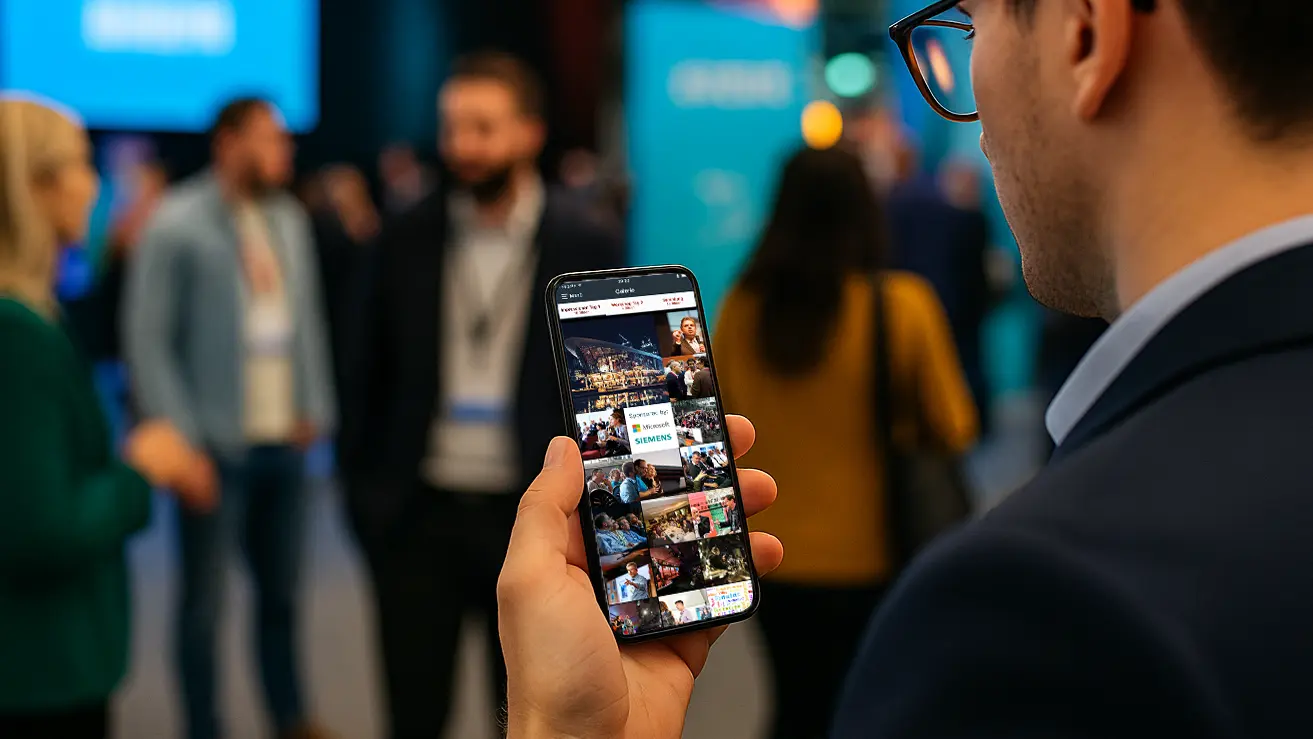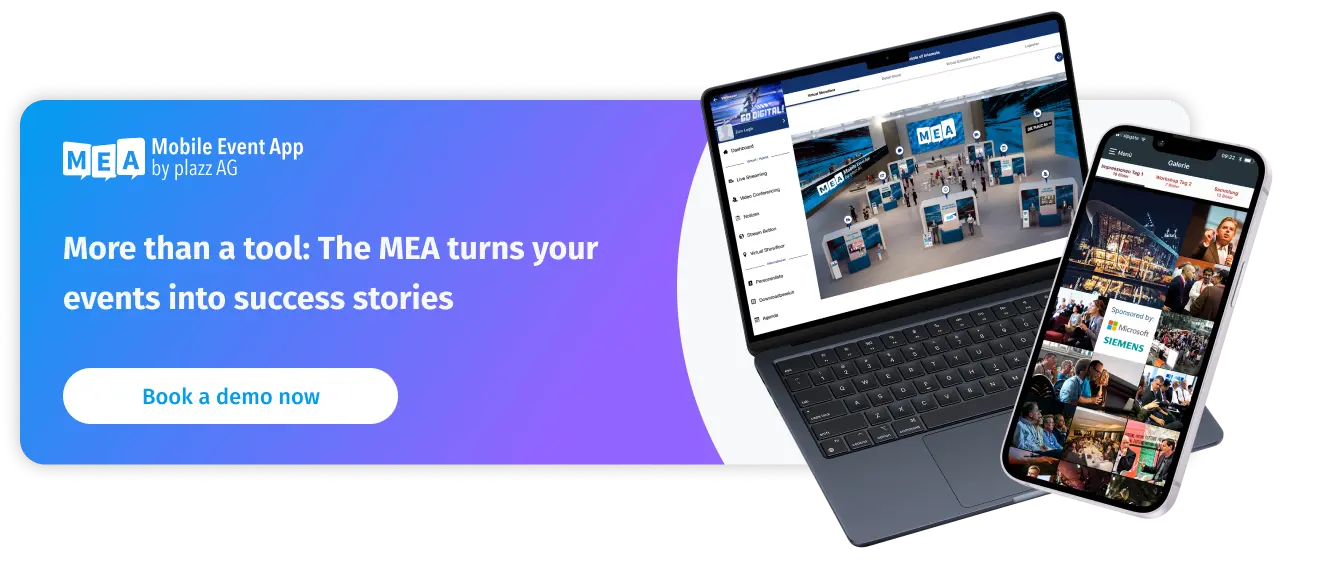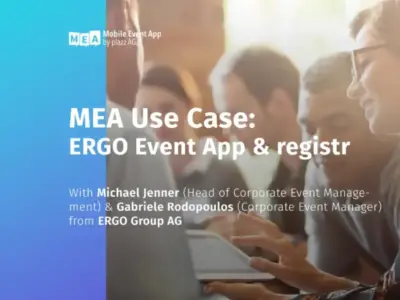
What used to be purely a physical experience is now a combination of analog and digital formats. With this shift, the requirements for event sponsorship have also evolved. Companies are no longer just looking for visibility — they expect targeted engagement and measurable results. This is where event apps come into play, acting as a central hub for communication, coordination, and brand integration.
Sponsorship via Event Apps: More than Just Banner Space
Event apps have long surpassed their role as digital program brochures. They now offer a wide range of features that allow sponsors to integrate meaningfully into the event experience. Visibility is no longer limited to logos — it is achieved through smart placement within agenda content, interactive tools, or push notifications. This makes sponsorship not only more efficient but also more sustainable.
One major benefit is the ability to tailor content to specific audiences. Depending on user profiles and interests, content can be dynamically targeted. For example, an educational partner can reach relevant professionals, while a local food vendor might connect with leisure-oriented visitors.
Apps also encourage interaction: contests, quizzes, or digital coupons enhance brand engagement on an emotional level. At the same time, real-time data such as click rates, time spent, and lead generation offer concrete insights into campaign performance.
Key Functions of an Event Sponsorship App
A powerful event app supports both organizers and sponsors with features such as:
1. Digital Ad Spaces
Sponsors can gain visibility across various areas of the app:
• Home screen banners
• Branded entries in program lists
• Sponsor spots in interactive maps
• In-app contests and surveys
2. Audience-Targeted Delivery
Using profile data, interest filters, or behavioral tracking, content is shown only to relevant user segments — reducing waste and boosting effectiveness.
3. Integrated Engagement Tools
Push notifications, personalized content, or gamified elements (like point systems) enhance interaction and visibility.
4. Reporting & Analytics
Event apps automatically track key performance indicators such as:
• Impressions
• Click rates
• Engagement with sponsored content
• Number of leads generated
These insights are aggregated into partner-ready reports.
Benefits for Organizers
For event organizers, integrating sponsorship into the app adds much-needed structure. Offerings can be modular, contracts are handled digitally, and ad space is centrally managed. This streamlines operations and enables a broader range of sponsorship models — from large premium packages to micro-sponsorships for local businesses.
Automated workflows such as reporting, scheduling, and push message planning reduce complexity and error rates. The collected data also provides a solid foundation for decisions on future events.
What Sponsors Gain
Sponsors get more than visibility — they get control. Campaigns can be targeted, adjusted in real time, and evaluated with precise metrics. Instead of guessing, sponsors get clarity: Who was reached? How often was content clicked? Which actions led to conversions?
Apps also allow for creative expression. Brands can present themselves via livestream integrations, interactive tools, or custom content — far beyond what a static roll-up banner at the venue could achieve.
Value for Attendees
Attendees also benefit from well-integrated sponsorship. When content is personalized, relevant, and engaging, it feels like added value rather than intrusive advertising. A discount code for a relevant product or a game during a break can create positive brand experiences.
These features also encourage longer app use and deeper interaction throughout the event — especially important for multi-day events.
Best Practices: Sponsorship Campaigns That Work
-
At a startup expo, a regional telecom provider launched an in-app contest that generated 150+ leads in two days.
-
At a marketing conference, B2B sponsors used session branding and interactive speaker bios to generate direct contacts.
-
At a cultural festival, local restaurants promoted offers via QR codes and coupon features — with high user engagement.
These examples illustrate the flexible and strategic ways sponsorship can be embedded via event apps, tailored to audience and format.
Legal Considerations
Like any form of digital marketing, in-app sponsorship is subject to data protection laws. Under GDPR, users must be clearly informed about how their data is used and must give active consent. Reputable apps offer integrated compliance tools — from consent management to e-signatures for contracts.
Organizers should also ensure proper advertising disclosures, brand guideline adherence, and documentation for exclusivity agreements.
Tips for a Successful Implementation
-
Define your goals: Are you aiming for brand awareness, lead generation, or direct sales?
-
Choose the right partners: Shared values and aligned target audiences are key.
-
Be creative: Use interactive features like challenges or livestream co-sponsoring.
-
Evaluate results: Measure what matters — dashboards help sponsors and organizers alike refine future efforts.
Conclusion
Mobile event apps are fundamentally reshaping the sponsorship landscape. They allow brands to connect with audiences in targeted, measurable, and engaging ways — while reducing administrative overhead for event teams.
For organizers, sponsors, and participants alike, event apps open new avenues for collaboration, interaction, and success. Going forward, the real question won’t be whether to use an event app for sponsorship — but how strategically you use it.






